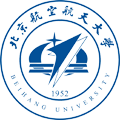Space Technology Applications
| Master-Program | |
|---|---|
| Duration | 2 years |
| Starting Date | September |
| Tuition Fee / Year | ¥35,000 (RMB) |
| Teaching Language | English |
Program Infomation
1.1 Master Program on Space Technology Applications: Remote Sensing and Geo-Information System (RS&GIS)The principle of remote sensing is to obtain information about objects and phenomenon on or around the Earth’s surface without having direct contact with them. The best way to implement remote sensing is using remote sensing satellite to organize remote sensing systems. Remote sensing satellites can move in different orbits with various altitudes which can cover huge area or even whole global.
Remote sensing systems can be passive or active. Passive systems mean they can either record solar energy that is reflected off the ground targets or emitted by them. Active systems mean they need to send the energy to some ground targets and receive the reflected signals by them. Radar technique is to be used.
The data collected by remote sensing systems must be processed by some special software into useful information which can be understood easily be users. Usually, GIS (Geographic Information System) can be used to form a lot of useful information.
1.2 Major Core Courses:
Probability and Statistics
Wavelets Analysis and its Applications
Theory of Matrix
Numerical Analysis
Computer Laboratory: Matlab Programming
Space Environment, Orbit and Spacecraft Systems
Introduction to Space Law
Space Technology and Space Economy
Introduction to China and Chinese Language
Remote Sensing Image Processing and Interpretation
Geographic Information System: Theory and Methods
Physical Principles of Remote Sensing
Introduction to Photogrammetry
Cartography & Geomatics
Software Applications of RS
Software Applications of GIS
Case Studies in the Applications of RS & GIS
GIS Spatial Database
Team Pilot Project
2.1 Master Program on Space Technology Applications: Micro-Satellite Technology
During the past decades, the micro-satellites have been applied widely to perform space experiments, demonstrate new technology and operational missions. Micro-satellite has become one of the key fields in the future space exploration. Because of their simple functions, small sizes, light weight as well as low cost, micro-satellite technology is extremely suitable to be developed in universities. On the other hand, although small or micro-satellites seem function and system sample, such kinds of satellites still consist of subsystems that almost cover all the technology in design and manufacture for normal satellites, therefore it is an efficient way for students to study and develop space technology through special micro-satellite projects. Many universities in the world are now endeavoring in various of micro-satellites,Surrey University in British and Delft University of Technology are examples.
In order to enhance student innovation and engineering abilities in spacecraft design, a student micro-Satellite (BUAA-SAT) program is sponsored by Beihang University (BUAA). After years work, BUAA-SAT has completed its preliminary design phase. All subsystems have been prototyped and demonstrated. Now the flight model and qualified tests of space environments are conducted. Meanwhile a training platform for microsatellite has been formed at Beihang University, which contains document materials for design, simulation as well as devices and facilities for test.
2.2 Major Core Courses:
Probability and Statistics
Wavelets Analysis and its Applications
Theory of Matrix
Numerical Analysis
Computer Laboratory: Matlab Programming
Space Environment, Orbit and Spacecraft Systems
Introduction to Space Law
Space Technology and Space Economy
Introduction to China and Chinese Language
Satellite System Design
Structure and Mechanism System Design
Satellite Control System Design and Simulation
Satellite OBDH System Design and Test
Satellite TT&C Technology
Satellite System Engineering Management
Team Pilot Project
3.1 Master Program on Space Technology Applications: Global Navigation Satellite Systems (GNSS)
Global Navigation Satellite System (GNSS) provides positioning, navigation and timing services for the whole world. It is the most important spatial infrastructure in the social life and military applications in modern times. The GNSS would serve people in many areas together with Remote Sensing, Geographical Information System such as disaster management, emergency response, land, aviation and maritime transportation etc.
The objective of the program is to promote students master the space segment for the GNSS, that is the satellite constellation, orbit and the payload for clock, signal source, communication and attitude control etc. To promote students master the ground segment for the satellite maintenance, telemetry, ephemeris and almanac, and even the user segment for the applications. To promote students master the frontier technologies on GNSS.
3.2 Major Core Courses:
Probability and Statistics
Wavelets Analysis and its Applications
Theory of Matrix
Numerical Analysis
Computer Laboratory: Matlab Programming
Space Environment, Orbit and Spacecraft Systems
Introduction to Space Law
Space Technology and Space Economy
Introduction to China and Chinese Language
GNSS Reference System
Principle of Global Navigation Satellite Systems
GNSS Navigation Signals
GNSS Receiver Principles and Design
GNSS/INS Integration Navigation
Global Satellite Navigation System Applications
Satellite Navigation Data Processing
GNSS Experiment
GNSS New Technologies
Team Pilot Project

